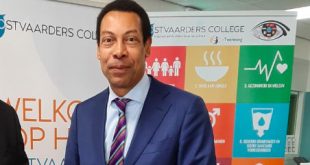As Test cricket returns to our screens for England vs West Indies, we gathered three of the sharpest minds in trading around the SBC roundtable to assess the future of cricket betting.
We spoke to John Wright, Head of Cricket at Integral Sports Management, Spreadex senior cricket trader Jamie Nuttall and William Stephenson, Head of Data & Trading Feeds at RPM Gaming, whose new Pace feed promises the fastest and most accurate data for the sport.
SBC: First-class international cricket is back today with the start of a three-Test series between England and the West Indies. What are your expectations for re-engagement?
John Wright: The viewership spike will be huge because cricket fans have been starved of the sport they love. As we’ve seen with other sports that have returned from the coronavirus-induced sidelines, the pent-up demand is intense.
Couple that to mainstream broadcast – the recent return of the PGA Tour stateside on Sky Sports, UK horse racing on ITV, even North American horse racing on Sky – and it’s small wonder that the audience numbers and accompanying betting turnover have been as palpable as they’ve been predictable.
William Stephenson: I think cricket could arguably expect a bigger uptick in traction, thanks to its incredibly loyal and engaged fanbase. Particularly when you consider that this Test Series is something of an oasis in a highly fragmented cricketing calendar.
Pakistan also have a UK Test tour scheduled for late summer, while the postponed IPL is also confident of a rebound later this year. However, with so much uncertainty remaining around the pandemic, not to mention the prospect of second waves, I expect sports fans in general to snatch the slim pickings of live action wherever they can.
Jamie Nuttall: Naturally, those major sports that can bounce back effectively have fewer rival events with which to compete, so they’re in a strong position to grab a bigger slice of market share. Importantly, with less competition, this is also their chance to turn a wider base of sports fans, recreational viewers and bettors on to the merits of their respective sports. That way, cricket can take a long-term place in their broader entertainment interests of those who may have previously overlooked it.
SBC: From a betting perspective, what do sportsbooks need to do to capitalise on the attention this Test series attracts?
JW: Of course, having access to an untapped or more captive audience is great. But it’s of no enduring utility if you can’t then retain that audience. So, from a sportsbook perspective, the challenge for operators on this Test series will not to sit idly by and lazily enjoy the short-term spike in interest and activity. That even applies within the varied formats of cricket itself.
Migrating quick-fix T20 oglers to five-day Test cricket may seem like a hard cross-sell these days, especially for younger viewers with shorter attention spans. However, within the betting realm, that doesn’t have to be the case. Shorter-form betting opportunities can be created from over-by-over runs, fall of next wicket, next batsman out, under-over runs for any bracket ranging from first-five overs to total innings runs.
This creates different courses for bettors to play on, with ‘snackable’ content that fits the bill, regardless of whether they’re dropping in for a few overs, an afternoon session or the entire match.

WS: The only thing I’d add to that “more product / more brackets” approach is that these markets need to be reconciled as soon as the results are in, or settlement is already established. Player frustration over protracted bet settlement is manifest across all sports, but can be particularly pronounced in cricket.
For example, if you go over first innings runs at 280, you could potentially wait for days before that innings is officially over at 650 all out, notwithstanding any weather delays. Instead, the markets should be settled as soon as a side registers north of 280 in that innings – and obviously that applies all the way down to narrower temporal markets from session runs to first five overs.
Nowadays, granted the finest cricket feeds and pricing algorithms, there should be no legitimate reason to suspend markets with overs still to play. In theory, to our mind at RPM Gaming, live betting on these events should run right up to, say, the fourth ball of the final over before they’re taken down.
When a line’s determined, it’s settled. This is key to returning winnings to a player in sync with their viewing experience to ensure satisfaction. Obviously, in turn, rapid recycling funds at fair margin will also give the operator a competitive edge over the long haul.
JN: As the guys say, the more live unsuspended brackets the better. The cat is completely out of the bag when it comes to the increasing importance of in-play versus pre-play, but that tide is even more powerful in cricket, with a 90%-10% split playing off strikingly against other sports where roughly 70% is traded after game time.
Consequently, you need to have a service that keeps up in-play, harnessing the fastest and most accurate data feeds to deliver market innovation. Not to mention the complex mathematical modelling that accommodates some of the subtleties of cricket whose formats and scoring systems are traditionally far harder to get a handle on then, say, sports like football where the jury is in to some significant degree.
The goal, though, is not to create a long-tail list of derivative in-play markets which can clutter an interface and muddy that customer experience. The initial handful of markets, premised on relevance and immediacy set the tone. And, of course, there’s a role for customisation and personalisation around the markets any given player might favour.
The dials of automation are certainly there for that these days. Operators must also ensure that the live pictures maintain stride with the live data, so that the viewing and the betting experience are effortlessly joined to the live action ball-by-ball.
Above all, this applies to cash-out functionality for which there should also always be a live value. After all, this feature ultimately redounds to the operator’s benefit (up to twice the margin), so having the reliable technology and trading capacity to offer it is well worthwhile.
SBC: In your view, what are the pros and cons of cricket data feeds at the moment and is machine learning actually a thing?

JW: In recent history, with automated in-play trading and the increasing speed of reliable data feeds, the model in the betting space has departed from the once massed ranks of the sports trading desk. After all, that’s a basic precept of good tech: do more with less.
However, while Tier-1 operators still have their specialist teams and traders, I feel there has been an overconfidence in cricket automation which leaves many susceptible. Ever since Sportradar bought Coverpoint Analytics some five years ago, bringing a new level of data-driven expert pricing, there’s been a sense of the sector resting on its laurels – admittedly, after a step-change which improved the return rate for operators to create a more viable product.
However, with smaller cricket teams and latency issues that can lag behind both Betfair and the super-fast Asian exchanges, there’s clearly a gap in the market for an upgraded, or zero-latency feed. As things currently stand, the main Asian exchanges top this reactive hierarchy, informed as they are by a vast network of in-venue scouts, but there’s sizeable scope for disruption.
And operators certainly need to get away from some recent, albeit occasional horror shows – e.g. getting routinely picked off in the night by arbers with access to the latest weather forecasts on Test matches; or even niche 50-over ODIs being set up as T20 games by mistake – a buffet for total runs bettors! There’s no excuse, even if you pass it off as a goodwill gesture to your VIPs.
JN: Operators rely more and more on third-party data feeds that accurately reflect what is happening in the stadium, and can be tweaked to a preferred margin or overround. However, their initial success in cricket has proven something of a gift and a curse. Cricket has become a neglected product since its tech watershed, and although operators do have experts in the sport, they cannot cover the growing appetite of a more global audience.
As for any real-world application of advanced artificial intelligence in these trading systems, that remains a way off. Especially in cricket where human insight and subjectivity still has a part to play. Take the weather – if it turns, most sports are either postponed or new conditions engender an obvious effect.
Cricket is still traded on the elements – atmospheric conditions, the impact on the state of the pitch, rain contracting the odds of a draw in a Test or edging a limited-overs game towards an abbreviated Duckworth-Lewis conclusion. The algorithms just aren’t there to make the adjustments on their own.
Which is why machine learning still remains the Canadian girlfriend of the sports betting industry. You can talk about her in glowing terms, even stick her name on the side of your stand at ICE. Trouble is, no-one’s ever met her.
WS: You’ve got to marshal your resources wisely, and there’s no room for complacency even with the latest feeds. More than any other sport, due to its unique variables and nuances, cricket trading is hard. You need the fastest data, aligned to shrewd intervention from a committed team of traders who consume the game via TV and radio (invariably quicker).
If you lazily take your eye off the game and rely on building in a seven-second time delay, you’ll get picked off. While, as we’ve discussed, if you just suspend your markets or focus on very few products, you won’t generate the betting volumes you’re after.
RPM Gaming have recently partnered with an India-based group to push the most comprehensive cricket feed in the industry to market. The Pace Cricket Service is the fastest in the industry, offering unparalleled levels of low-latency data from events all over the globe.
Trader knowledge has been combined with an in-venue data team to create a best-in-breed cricket offering which diversifies revenue streams and drives incremental profits, while also enhancing the experience for the punter.
Accordingly, we feel our Pace feed is primed to claim a large share of the rapidly expanding global cricket market. Discussions with major operators across the globe have been extremely positive, with most suggesting they are willing to trial it thanks to our understanding of API and integration requirements.
SBC: Do you see some of these issues and patterns playing out in the 1st Test then? Are there any markets or biases that bettors should be looking out for?
WS: Of course, typically, having just promoted the importance of zero-latency feeds, the 1st Test at Southampton’s Ageas Bowl is a match where such competitive trading edges will be blunted. It’s in the UK, extensively covered on TV and radio and, seeing as the game takes place behind closed doors, there’ll be no scouting advantage for anyone.
Nevertheless, my comments around superior modelling, a diverse range of markets, limited suspensions and a dedicated team still apply. Particularly in the opening morning where the true state of the pitch will be one of the great unknowns.
JN: As Will says, the opening morning on a pitch that’s seen no cricket will be crucial to pricing. Has it been perfectly prepared? Will it react in rogue or reliable fashion? These questions will be asked and answered differently by a fluctuating market in the first half an hour of play. Prices could be all over the show, so stay alert. In fact, if anyone’s proven correct about total runs, they’ll be right by accident!
JW: I’ll be looking out for how the performance of batsmen and bowlers has been comparatively affected by this sporting hiatus. Received wisdom, especially at this elite level, is that a bowler’s condition and execution are more adversely impacted by a limited or disjointed preparation.
A batsman’s role hinges on fewer moving parts and less of a reliance on physical form and practice. Indeed, with fitness a big concern for bowlers, expect the captains to rotate their pacemen more often which, in turn, could impact wicket-taking rhythm or introduce part-time bowlers of more questionable lines and lengths.
In theory, these aggregated granular differences should give batters a solid performance advantage over their eternal adversaries. Moreover, as with other sports playing behind closed doors, the impact of no crowd atmosphere on individual motivations may also show its hand on a first day of potentially wild swings in pricing.









